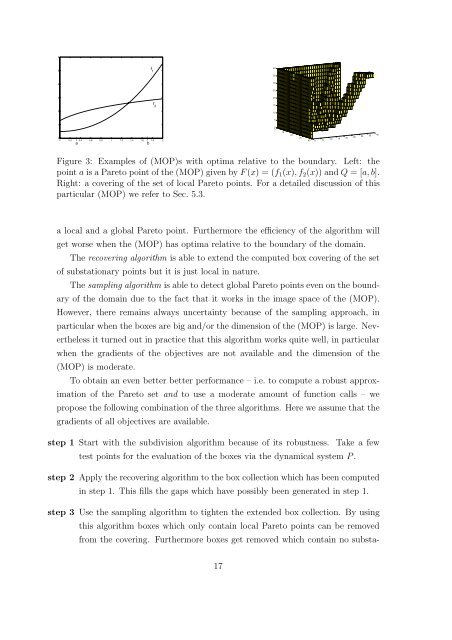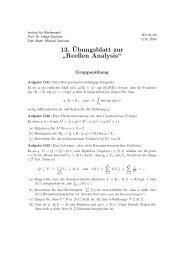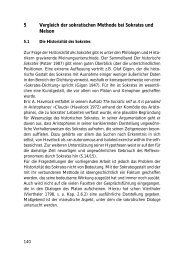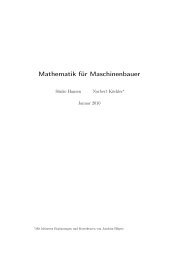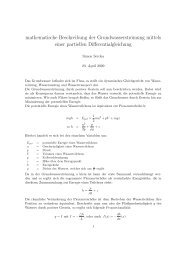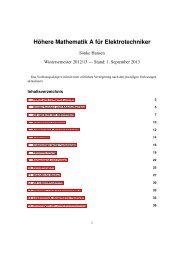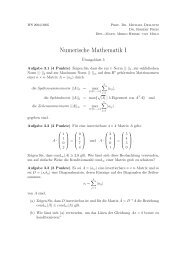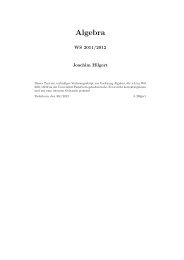Covering Pareto Sets by Multilevel Subdivision Techniques
Covering Pareto Sets by Multilevel Subdivision Techniques
Covering Pareto Sets by Multilevel Subdivision Techniques
You also want an ePaper? Increase the reach of your titles
YUMPU automatically turns print PDFs into web optimized ePapers that Google loves.
0 0.2 0.4 0.6 0.8 1 1.2 1.4 1.6 1.8 26f 1f 2540354302532015210510| |ab0010203040 0 5 10 15 20 25 30 35 40Figure 3: Examples of (MOP)s with optima relative to the boundary. Left: thepoint a is a <strong>Pareto</strong> point of the (MOP) given <strong>by</strong> F (x) =(f 1 (x),f 2 (x)) and Q =[a, b].Right: a covering of the set of local <strong>Pareto</strong> points. For a detailed discussion of thisparticular (MOP) we refer to Sec. 5.3.a local and a global <strong>Pareto</strong> point. Furthermore the efficiency of the algorithm willget worse when the (MOP) has optima relative to the boundary of the domain.The recovering algorithm is able to extend the computed box covering of the setof substationary points but it is just local in nature.The sampling algorithm is able to detect global <strong>Pareto</strong> points even on the boundaryof the domain due to the fact that it works in the image space of the (MOP).However, there remains always uncertainty because of the sampling approach, inparticular when the boxes are big and/or the dimension of the (MOP) is large. Neverthelessit turned out in practice that this algorithm works quite well, in particularwhen the gradients of the objectives are not available and the dimension of the(MOP) is moderate.To obtain an even better better performance – i.e. to compute a robust approximationof the <strong>Pareto</strong> set and to use a moderate amount of function calls – wepropose the following combination of the three algorithms. Here we assume that thegradients of all objectives are available.step 1 Start with the subdivision algorithm because of its robustness. Take a fewtest points for the evaluation of the boxes via the dynamical system P .step 2 Apply the recovering algorithm to the box collection which has been computedin step 1. This fills the gaps which have possibly been generated in step 1.step 3 Use the sampling algorithm to tighten the extended box collection. By usingthis algorithm boxes which only contain local <strong>Pareto</strong> points can be removedfrom the covering. Furthermore boxes get removed which contain no substa-17


